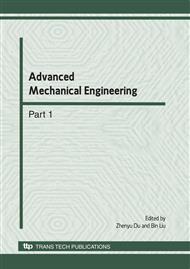p.616
p.620
p.625
p.637
p.641
p.648
p.653
p.657
p.661
Optimization of Process Parameters in Lead-Free Wave Soldering Based on Orthogonal Experiment and Analytic Hierarchy Process
Abstract:
In order to solve the typical soldering defects in lead-free wave soldering, the Design of Experiment(DOE) was conducted to optimize the process parameters. Based on the printed circuit board(PCB) experimental results, the method of Analytic Hierarchy Process(AHP) was employed to analyze the experiment results quantitatively. Then the influential weights of each factor in different levels were obtained. It is concluded that the influential sequences of the four main process parameters in lead-free wave soldering are track speed, flux quantity, soldering temperature and preheat temperature; the optimal process parameters are as follows: flux quantity 40mL•min-1, preheat temperature 110°C, track speed 1.6m•min-1, soldering temperature 265°C. Furthermore, the reasons of solder bridging and missing weld defects were discussed systematically according to the analysis results. This paper reveals the key direction to optimize the process parameters and provides an effective measure to improve the soldering quality in lead-free wave soldering.
Info:
Periodical:
Pages:
641-647
Citation:
Online since:
June 2010
Authors:
Price:
Сopyright:
© 2010 Trans Tech Publications Ltd. All Rights Reserved
Share:
Citation:


